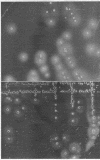Abstract
Deneke, Anneliese (University of Wisconsin, Madison) and Hans Blobel. Fibrinogen media for studies on staphylococci. J. Bacteriol. 83:533–537. 1962—Fibrinogen media were prepared simply by spreading rabbit plasma or a bovine fibrinogen solution over the surface of certain solidified agar media, thus eliminating the necessity of incorporation of fibrinogen into liquefied agar media at a critical temperature. With agar media composed of heart infusion broth, blood agar base, or Trypticase soy broth, distinct coagulase reactions were observed which corresponded closely to those obtained with the tube test.
A bovine fibrinogen solution, applied to the surface of some of the commonly used selective media for staphylococci, provided an additional and more specific test system for coagulase production of individual colonies, and consequently aided in the presumptive identification of pathogenic staphylococci.
Full text
PDF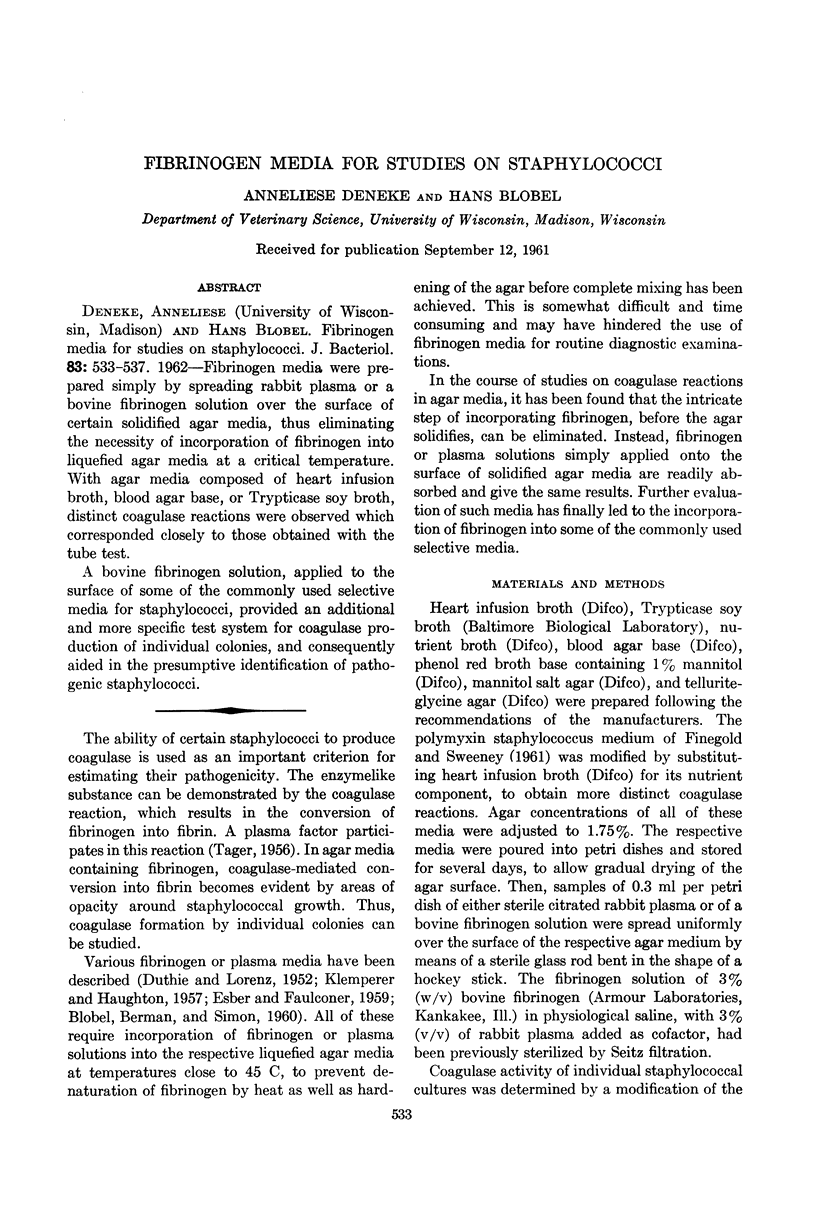
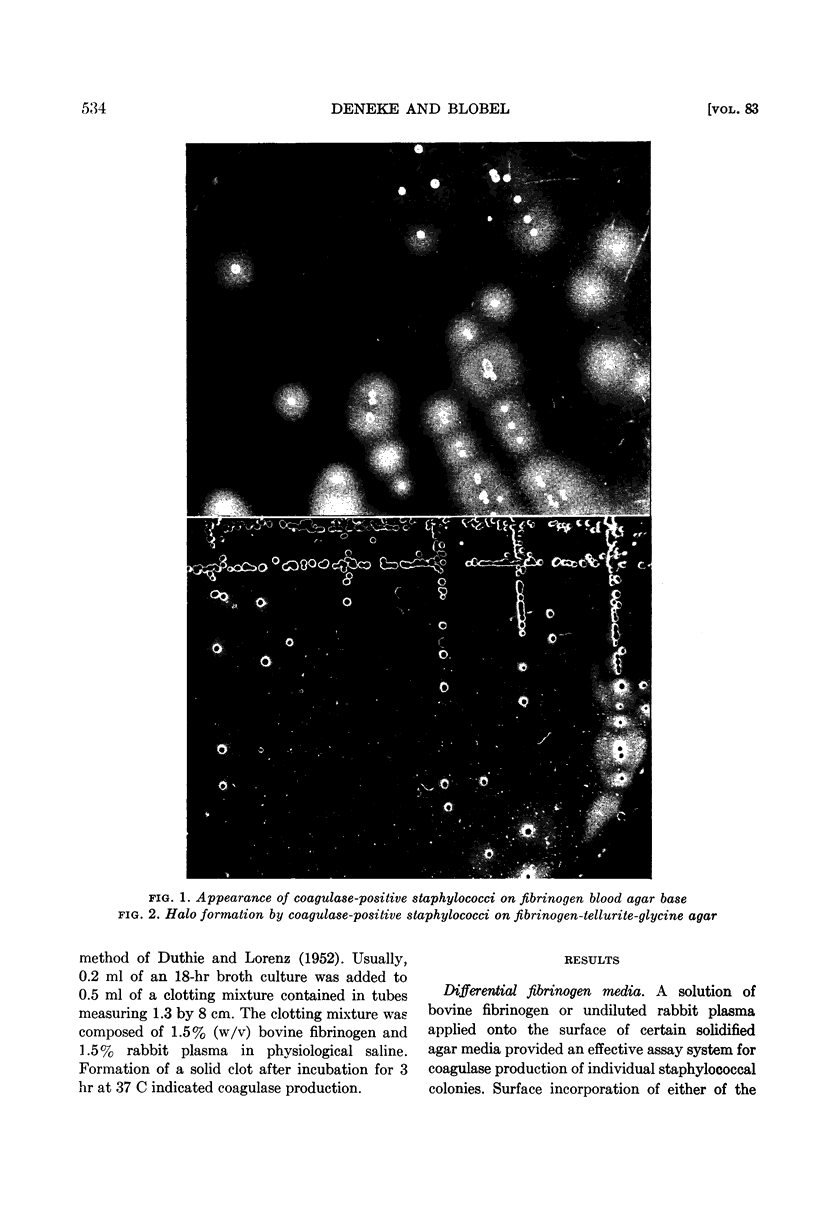

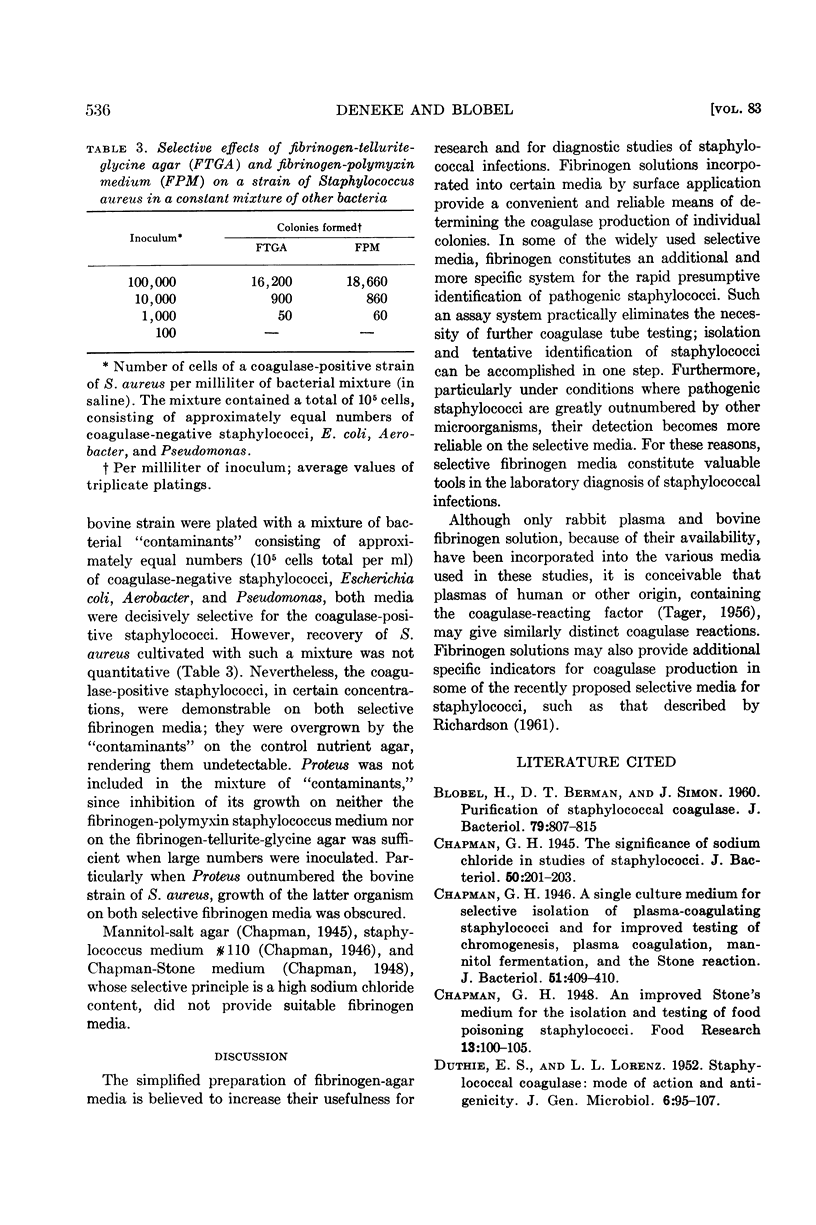
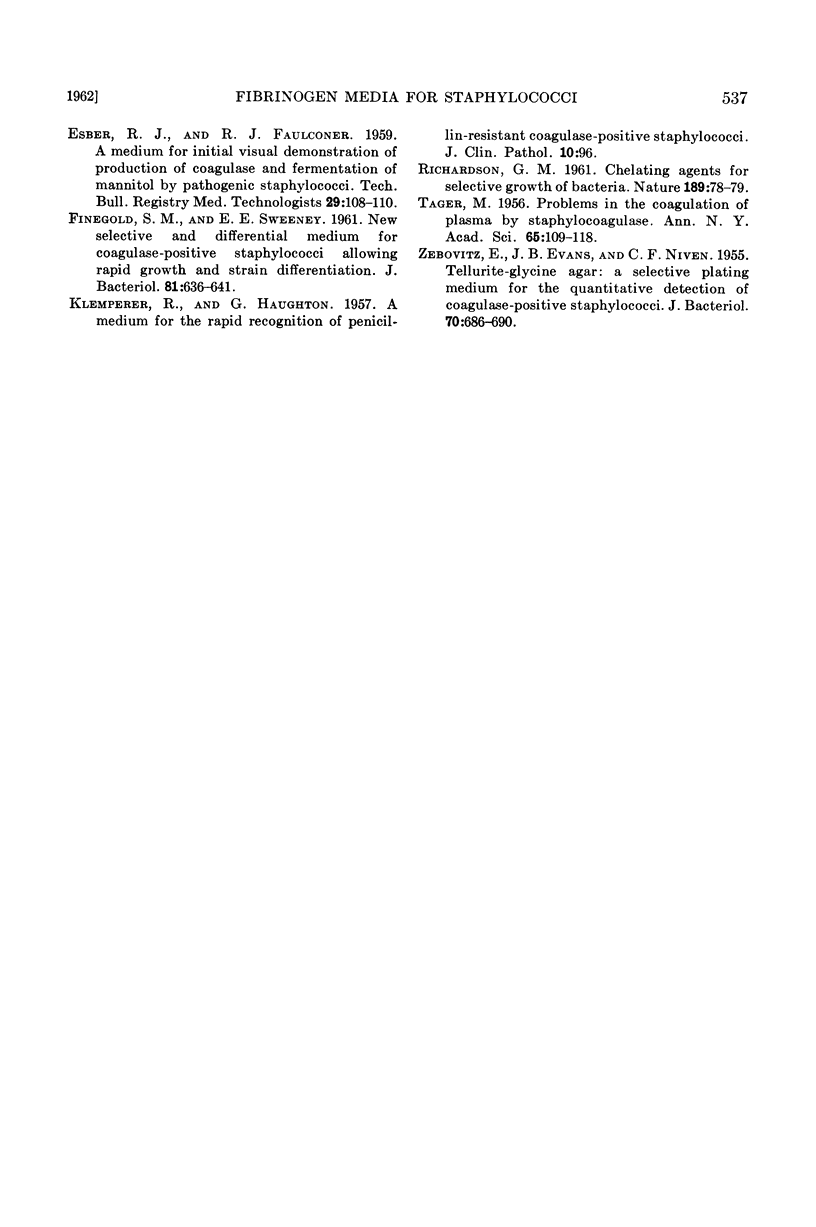
Images in this article
Selected References
These references are in PubMed. This may not be the complete list of references from this article.
- BLOBEL H., BERMAN D. T., SIMON J. Purification of staphylococcal coagulase. J Bacteriol. 1960 Jun;79:807–815. doi: 10.1128/jb.79.6.807-815.1960. [DOI] [PMC free article] [PubMed] [Google Scholar]
- Chapman G. H. The Significance of Sodium Chloride in Studies of Staphylococci. J Bacteriol. 1945 Aug;50(2):201–203. [PMC free article] [PubMed] [Google Scholar]
- DUTHIE E. S., LORENZ L. L. Staphylococcal coagulase; mode of action and antigenicity. J Gen Microbiol. 1952 Feb;6(1-2):95–107. doi: 10.1099/00221287-6-1-2-95. [DOI] [PubMed] [Google Scholar]
- ESBER R. J., FAULCONER R. J. A medium for initial visual demonstration of production of coagulase and fermentation of mannitol by pathogenic staphylococci. Tech Bull Regist Med Technol. 1959 Jul;29(7):108–110. [PubMed] [Google Scholar]
- FINEGOLD S. M., SWEENEY E. E. New selective and differential medium for coagulase-positive staphlococci allowing rapid growth and strain differentiation. J Bacteriol. 1961 Apr;81:636–641. doi: 10.1128/jb.81.4.636-641.1961. [DOI] [PMC free article] [PubMed] [Google Scholar]
- KLEMPERER R., HAUGHTON G. A medium for the rapid recognition of penicillin-resistant coagulase-positive staphylococci. J Clin Pathol. 1957 Feb;10(1):96–99. doi: 10.1136/jcp.10.1.96. [DOI] [PMC free article] [PubMed] [Google Scholar]
- RICHARDSON G. M. Chelating agents for selective growth of bacteria. Nature. 1961 Jan 7;189:78–79. doi: 10.1038/189078b0. [DOI] [PubMed] [Google Scholar]
- TAGER M. Problems in the coagulation of plasma by staphylocoagulase. Ann N Y Acad Sci. 1956 Aug 31;65(3):109–118. doi: 10.1111/j.1749-6632.1956.tb36629.x. [DOI] [PubMed] [Google Scholar]
- ZEBOVITZ E., EVANS J. B., NIVEN C. F., Jr Tellurite-glycine agar: a selective plating medium for the quantitative detection of coagulase-positive staphylococci. J Bacteriol. 1955 Dec;70(6):686–690. doi: 10.1128/jb.70.6.686-690.1955. [DOI] [PMC free article] [PubMed] [Google Scholar]



